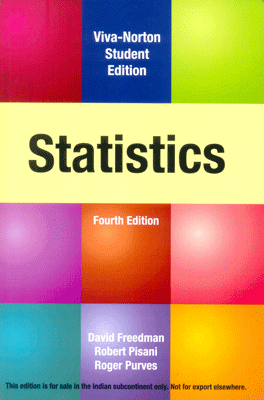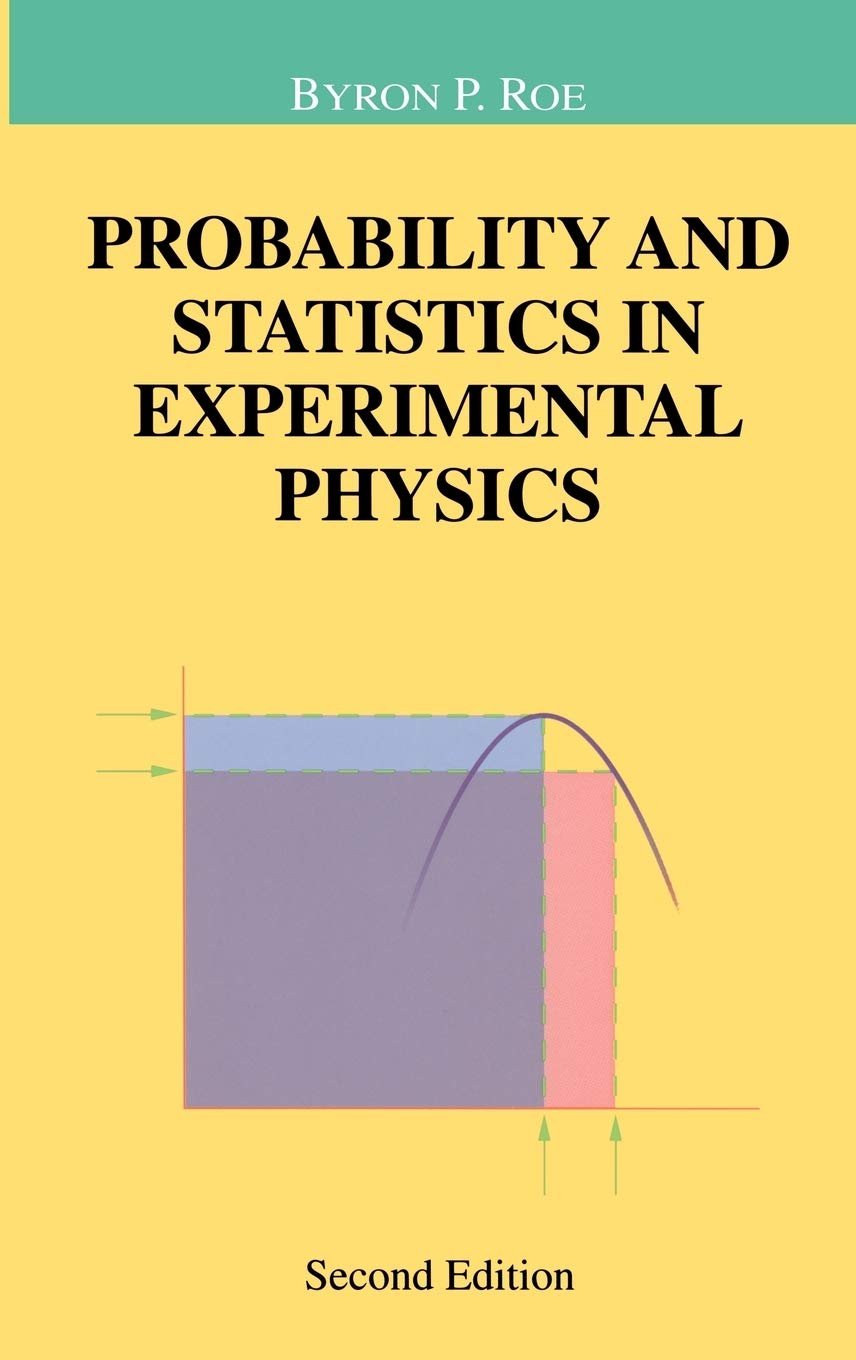Description:
Statistics is written in clear, everyday language, without the equations that sometimes baffle non-mathematical readers. The goal is teaching students how to think about statistical issues. Techniques are introduced through examples, showing how statistics has helped solve major problems in political science, psychology, genetics, medicine, and other fields.
Statistics in unusual in its emphasis on the models that underlie statistical inference. The authors make the models comprehensible and show why choosing the wrong model can lead students astray. Carefully constructed exercises in every chapter offer practice in computational skills. Other call for rough estimates and qualitative judgments, so students are forced to come to grips with the concepts instead of mechanically applied formulas. Most sections close with an exercise set; the answers are in the back of the book, often with complete solutions. Chapters also have review exercises, without answers, for homework and tests. Illustrations are in integral part of the exposition. Beginners learn how to read histograms and scatterplots and how to think about these graphics in the context of real problems. Working drawings are all done freehand; students are encouraged to make similar sketches and are not intimidated by too much precision.
About the Author
Table of Contents
Part I Design of Experiments •
Chapter 1. Controlled Experiments: The Salk Vaccine Field Trial • The Portacaval Shunt • Historical Controls • Summary •
Chapter 2. Observational Studies: Introduction • The Clofibrate Trial • More Examples • Sex Bias in Graduate Admissions • Confounding • Review Exercises • Summary and Overview? Part II Descriptive Statistics •
Chapter 3. The Histogram: Introduction • Drawing a Histogram • The Density Scale • Variables • Controlling for a Variable • Cross-Tabulation • Selective Breeding • Review Exercises • Summary •
Chapter 4. The Average and the Standard Deviation: Introduction • The Average • The Average and the Histogram • The Root-Mean-Square • The Standard Deviation • Computing the Standard Deviation • Using a Statistical Calculator • Review Exercises • Summary •
Chapter 5 The Normal Approximation for Data: The Normal Curve • Finding Areas under the Normal Curve • The Normal Approximation for Data • Percentiles • Percentiles and the Normal Curve • Change of Scale • Review Exercises • Summary •
Chapter 6. Measurement Error: Introduction • Chance Error • Outliers • Bias • Review Exercises • Special Review Exercises • Summary and Overview •
Chapter 7. Plotting Points and Lines: Reading Points off a Graph • Plotting Points • Slope and Intercept • Plotting Lines • The Algebraic Equation for a Line •
Chapter 8. Correlation: The Scatter Diagram • The Correlation Coefficient • The SD Line • Computing the Correlation Coefficient • Review Exercises • Summary • Part III Correlation and Regression •
Chapter 9. More about Correlation: Features of the Correlation Coefficient • Changing SDs • Some Exceptional Cases • Ecological Correlations • Association is Not Causation • Review Exercises • Summary •
Chapter 10. Regression: Introduction • The Graph of Averages • The Regression Method for Individuals • The Regression Fallacy • There Are Two Regression Lines • Review Exercises • Summary •
Chapter 11. The R.M.S. Error for Regression: Introduction • Computing the R.M.S. Error • Plotting the Residuals • Looking at Vertical Strips • Using the Normal Curve Inside a Vertical Strip? Review Exercises • Summary • Part IV Probability •
Chapter 12. The Regression Line: Slope and Intercept: The Method of Least Squares • Does the Regression Make Sense? • Review Exercises • Summary and Overview •
Chapter 13. What Are the Chances?: Introduction • Conditional Probabilities • The Multiplication Rule • Independence • The Collins Case • Review Exercises • Summary •
Chapter 14. More about Chance: Listing the Ways • The Addition Rule • Two FAQs (Frequently Asked Questions) • The Paradox of the Chevalier De Mere • Are Real Dice Fair? • Review Exercises • Summary •
Chapter 15. The Binomial Formula: Introduction • The Binomial Formula • Review Exercises • Special Review Exercises • Summary and Overview • PART V. Change Variability :
Chapter 16. The Law of Averages: What Does the Law of Averages Say? • Chance Processes • The Sum of Draws • Making a Box Model • Review Exercises • Summary •
Chapter 17. The Expected Value and Standard Error: The Expected Value • The Standard Error • Using the Normal Curve • A Short-Cut • Classifying and Counting • Review Exercises • Postscript • Summary • Chapter
Chapter 18. The Normal Approximation for Probability Histograms: Introduction • Probability Histograms • Probability Histograms and the Normal Curve • The Normal Approximation • The Scope of the Normal Approximation • Conclusion • Review Exercises • Summary • Part VI Sampling •
Chapter 19. Sample Surveys: Introduction • The Literary Digest Poll • The Year the Polls Elected Dewey • Using Chance in Survey Work • How Well Do Probability Methods Work? • A Closer Look at the Gallup Poll • Telephone Surveys • Chance Error and Bias • Review Exercises • Summary •
Chapter 20. Chance Errors in Sampling: Introduction • The Expected Value and Standard Error • Using the Normal Curve • The Correction Factor • The Gallup Poll • Review Exercises • Summary •
Chapter 21. The Accuracy of Percentages: Introduction • Confidence Intervals • Interpreting a Confidence Interval • Caveat Emptor • The Gallup Poll • Review Exercises • Summary •
Chapter 22. Measuring Employment and Unemployment: Introduction • The Design of the Current Population Survey • Carrying out the Survey • Weighting the Sample • Standard Errors • The Quality of the Data • Bias • Review Exercises Summary •
Chapter 23. The Accuracy of Averages: Introduction • The Sample Average • Which SE? • A Reminder • Review Exercises • Special Review Exercises • Summary and Overview • Part VII Chance Models •
Chapter 24. A Model for Measurement Error: Estimating the Accuracy of an Average • Chance Models • The Gauss Model • Conclusion • Review Exercises • Summary •
Chapter 25. Chance Models in Genetics: How Mendel Discovered Genes • Did Mendel’s Facts Fit His Model? • The Law of Regression • An Appreciation of the Model • Review Exercises • Summary and Overview • Part VIII Tests of Significance •
Chapter 26 Tests of Significance • Introduction • The Null and the Alternative • Test Statistics and Significance Levels • Making a Test of Significance • Zero-One Boxes • The t-Test • Review Exercises • Summary •
Chapter 27 More Tests for Averages • The Standard Error for a Difference • Comparing Two Sample Averages Experiments • More on Experiments • When Does the z-Test Apply? • Review Exercises • Summary •
Chapter 28. The Chi-Square Test: Introduction • The Structure of the c2-Test • How Fisher Used the c2-Test • Testing Independence • Review Exercises • Summary •
Chapter 29. A Closer Look at Tests of Significance: Was the Result Significant? • Data Snooping • Was the Result Important? • The Role of the Model • Does the Difference Prove the Point? • Conclusion • Review Exercises • Special Review Exercises • Summary and Overview • Notes • Answers to Exercises Tables •
Index












Reviews
There are no reviews yet.